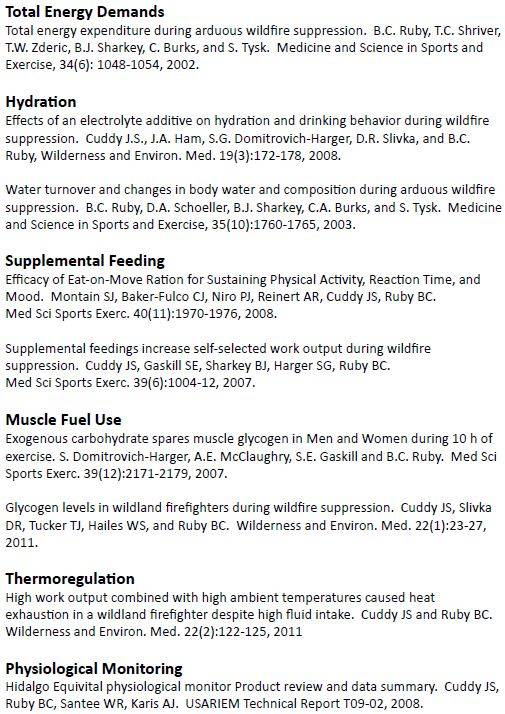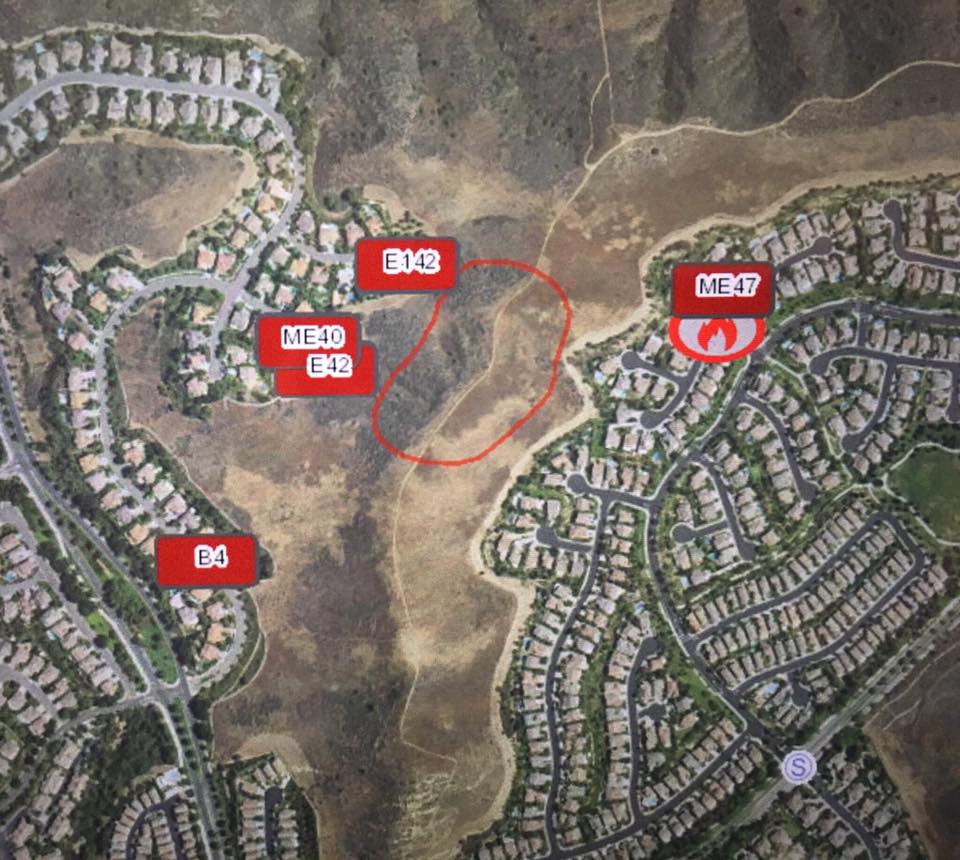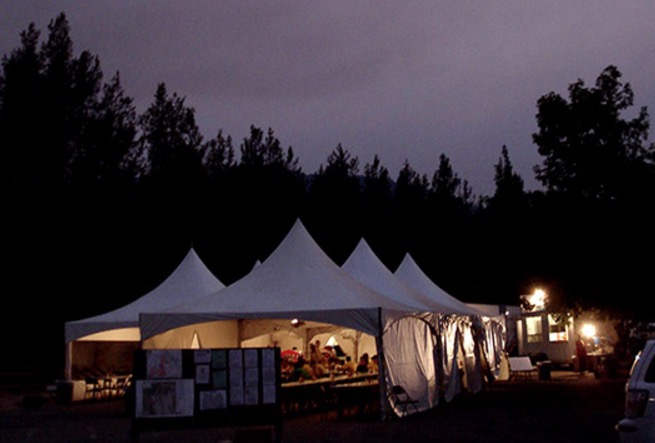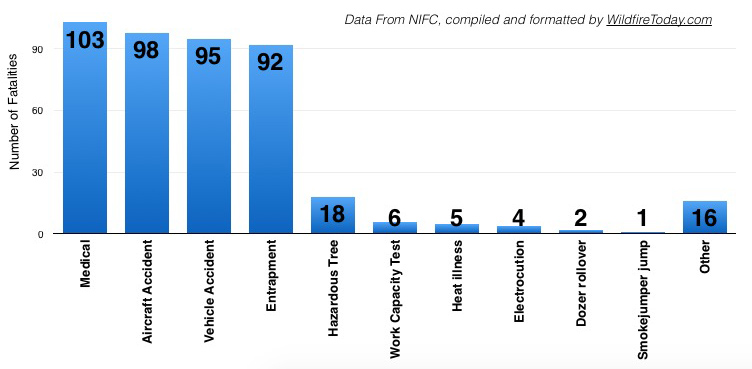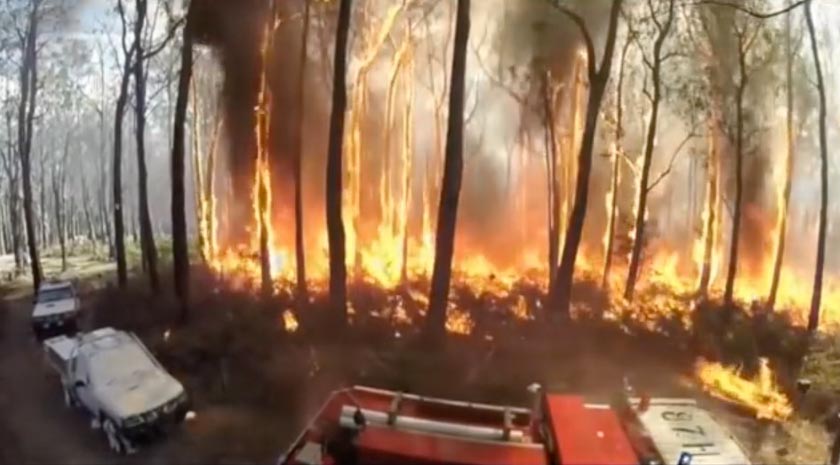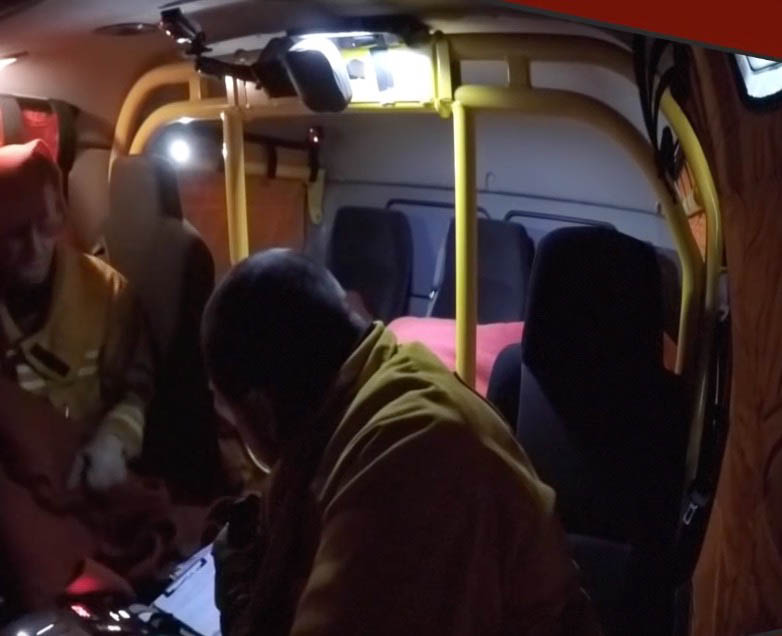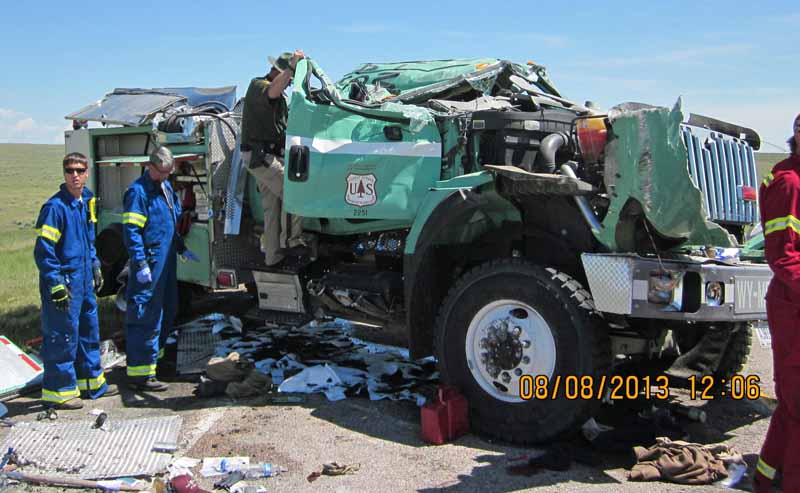Above: Firefighter on the Shep Canyon fire in South Dakota, September 6, 2011. Photo: Bill Gabbert/Wildfire Today.
As we officially enter Summer this week in the northern hemisphere, it’s a good time to revisit an article we wrote in 2011 about heat-related injuries.
****
After reading our excerpt and later the full document from the the Serious Accident Investigation Factual Report for the hyperthermia fatality of Caleb Hamm on the CR 337 fire in Texas, we heard from Dr. Brent Ruby, who has completed studies on this exact issue, even having studied wildland firefighters while they were working on fires. In one of his studies he was monitoring a wildland firefighter outfitted with a core temperature monitor, an ambient temperature sensor, and a special Camelback hydration system that monitored his water intake. This firefighter experienced a heat-related illness, heat exhaustion, and had to be evacuated off the fireline by a helicopter. That was a terrible thing to happen to a firefighter, and I’m sure the researchers thought the same thing, but it was probably a once in a lifetime cornucopia of incredibly useful data. Dr. Ruby sent us this message, reprinted here with his permission:
I was bothered by the findings of the CR337 fatality report from the investigation team. There are issues within this case that are very similar to a published heat exhaustion case study we published recently (Wilderness and Environmental Medicine 22, 122-125, 2011, http://www.ncbi.nlm.nih.gov/pubmed/21664560). In this report, we document drinking behavior, activity patterns, skin and core temperatures in a subject that suffered heat exhaustion and required evacuation. The lessons learned from this research clearly indicate that the best protection against a heat injury is reducing work rate. [*the abstract from the study is below]
Aggressive hydration strategies are over-preached and may provide a false sense of protection. It should be emphasized that the autopsy report as described in the fatality report indicated no signs of dehydration or electrolyte imbalance. I have tried to push these concepts to crews and safety officers when I get a chance to speak to them at meetings. I was bothered by this fatality knowing that it is seemingly directly linked to some of our research findings. I have tried to emphasize this to anyone that will listen in the world of wildfire.
You can certainly review our website to gain a better understanding of the publications we have done from research with the WLFF http://www.umt.edu/wpem. We have a great deal of physiological data, hydration, energy demands of the job, importance of supplemental feedings, etc. from all our work over the years. This peer reviewed research provides objective, scientific evidence that can be used to to change or influence policy to enhance safety on the line.
Let me know if you have any questions.
Regards, Brent Ruby
Brent C. Ruby, Ph.D., FACSM
Director, Montana Center for Work Physiology and Exercise Metabolism, The University of Montana
* Here is the abstract from the study:
Wilderness Environ Med. 2011 Jun;22(2):122-5.
High work output combined with high ambient temperatures caused heat exhaustion in a wildland firefighter despite high fluid intake.
Cuddy JS, Ruby BC.
Montana Center for Work Physiology and Exercise Metabolism, The University of Montana, Missoula, MT 59812-1825, USA.
The purpose of this case study is to examine the physiological/behavioral factors leading up to heat exhaustion in a male wildland firefighter during wildland fire suppression. The participant (24 years old, 173 cm, 70 kg, and 3 years firefighting experience) experienced heat exhaustion following 7 hours of high ambient temperatures and arduous work on the fire line during the month of August. At the time of the heat-related incident (HRI), core temperature was 40.1 °C (104.2 °F) and skin temperature was 34.4 °C (93.9 °F). His work output averaged 1067 counts·min(-1) (arbitrary units for measuring activity) for the 7 hours prior to the HRI, a very high rate of work over an extended time period during wildfire suppression.
In the 2.5 hours leading up to the heat incident, he was exposed to a mean ambient temperature of 44.6 °C (112.3 °F), with a maximum temperature of 59.7 °C (139.5 °F). He consumed an average of 840 mL·h(-1) in the 7 hours leading up to the incident and took an average of 24 ± 11 drinks·h(-1) (total of 170 drinks). The combined effects of a high work rate and high ambient temperatures resulted in an elevated core temperature and a higher volume and frequency of drinking than typically seen in this population, ultimately ending in heat exhaustion and removal from the fire line.
The data demonstrate that heat-related incidents can occur even with aggressive fluid intake during wildland fire suppression.
Unfortunately, even though Dr. Ruby’s research is funded by taxpayers through the National Institutes of Health, the National Science Foundation, and the Department of Defense, taxpayers are blocked from seeing the full results unless they pay a fee to the privately owned company that published the paper. We have written before about the results of taxpayer-funded wildfire-related research being held hostage by private companies. Dr. Ruby told Wildfire Today that he will send a copy of his paper to individuals that write to him at brent dot ruby at mso dot umt dot edu
The combined information about the fatality of Caleb Hamm on the CR 337 fire and Dr. Ruby’s study on wildland firefighters, is shocking. From the abstract, again:
The data demonstrate that heat-related incidents can occur even with aggressive fluid intake during wildland fire suppression.
Working on a wildfire on a hot day can lead to heat exhaustion and hyperthermia, and can be fatal EVEN IF a person drinks plenty of water and is not dehydrated.
Symptoms and prevention
We asked Dr. Ruby for more information:
Exertional hyperthermia occurs when the metabolic heat production from hard work overwhelms the bodies ability to off load it to the environment. This unloading can be blocked by clothing and/or slowed due to high radiant heat from the sun or an adjacent fire.
The basic symptoms of heat exhaustion are commonplace and can include profuse sweating, weakness, nausea, sometimes vomiting, lightheadedness, headache and sometimes mild muscle cramps.
The best approach [to prevent heat exhaustion and hyperthermia] is to know thyself and thy physical limits. Establishing a pace schedule that allows temperature to come back down in between periods of work that result in a rise in temperature. The factors of importance are pace, fitness level for the task at hand, hydration behaviors and simultaneously electrolyte concentrations in the blood.
It is important for wildland firefighters to drink plenty of water, but this will not, by itself, totally eliminate all chances of heat-related illness.
Be careful out there.
===============
UPDATE October 27, 2011:
Dr. Ruby sent us the following list of other publications on similar topics that are in peer reviewed journals. I assume that most of them are not available to the public (don’t get me started on that again!) unless you pay the ransom fees at the private companies, or send a message to Dr. Ruby: brent dot ruby at mso dot umt dot edu
====================
UPDATE October 28, 2011:
The U.S. National Library of Medicine has an excellent article about heatstroke, which can follow heat cramps and heat exhaustion and is life-threatening. The article includes causes, symptoms, first aid, what not to do, when to call 911, and prevention (including “avoid exercise or strenuous physical activity outside during hot or humid weather”. Good luck with that one, firefighters.)


